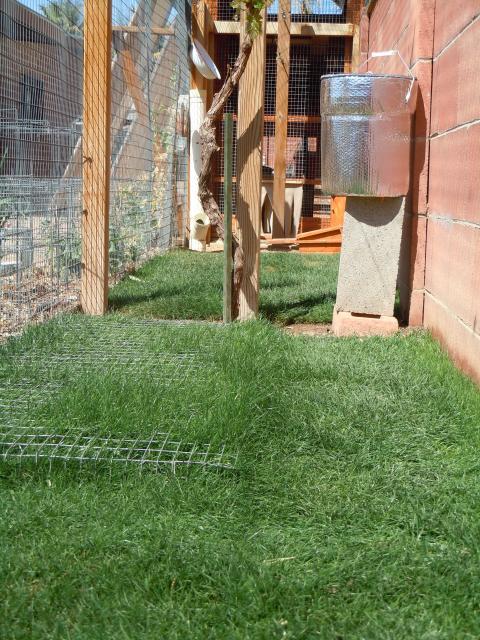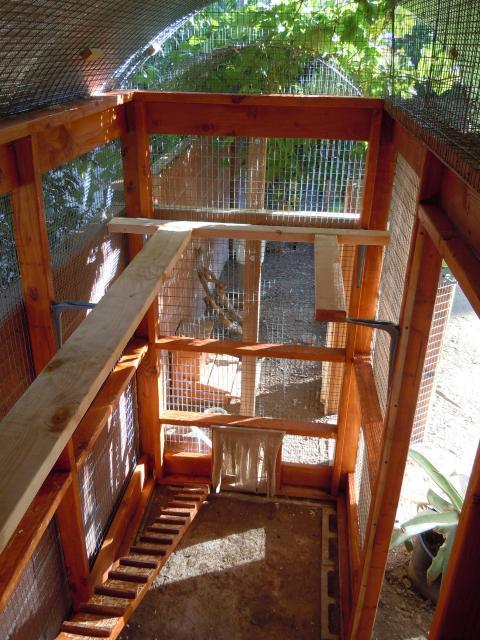On the subject of dealing with heat, I agree that shade and fresh water are the two keys, but once the temperature gets above about 105, you have to do *something* to provide additional cooling, or else you're going to start having losses. It can be cold food, ice blocks, pans of water, misters or whatever, but at a certain point its just too hot outside for any animal to live. Everyone has to figure out what works best for them, personally I find that running a mister for a few hours a day, say 11 or 12 until 4 or 5 in the afternoon works well to keep my chickens alive and relatively comfortable, while not causing any problems in terms of smell or breeding files or parasites.
This is very good advise, especially for our new members who have not yet experienced an AZ summer with chickens. This is especially true for coops that have insufficient shade and ventilation, which many recently posted coops suffer to some degree. While I agree that it would be best to raise chickens here without the use of extra-ordinary means (fans, misters, ice, evaporative and AC cooling) because of their potential for failure, we have to do what we have to do to keep them alive in the situation in which we've placed them. We here in the low desert are really at the edge of what is possible to survive in terms of heat. The native animals that live here even struggle at times and they've have had countless generations over vast amounts of time to adapt to our climate. Our chickens have not had that opportunity.
I would also note that a number of our well respected and long-time AZ BYCers use AC or evaporative cooling with no ill effects. Just because you're cooling a space, it doesn't mean it needs to be cool by our standards. I assure you, when it's 110+ outside, being able to escape to 95 degrees would be greatly appreciated by your birds. Moving from cold to warm places does not cause the sniffles in chickens.
Moisture on soil, misted, on bricks, etc. always helps. However, you should be mindful that chronically wet soil/surfaces promote the development of many chicken pathogens, including fungal lung infections and coccidiosis. If possible, it's best to allow wet places to dry out between moistening events. The drying out kills the worst things. I rotate irrigation under my fruit trees and they're quick to figure out which trees have recently been watered. If you're using the moist bricks in a pan method, have two sets that you can rotate and allow to dry out between uses, otherwise, they will quickly become sponges for all sorts of bad things.
A mister system can be inexpensive and easy to set up. Here are two types from Home depot, a free-standing single outlet or a hose-type with several outlets:


You can hook them up to a relatively ($32) inexpensive hose timer like this:

I also have a 5-gallon nipple waterer that is covered with Reflectix radiant barrier insulation. When it gets over 105 or so I put in a frozen milk-jug full water. I have two jugs so that I can rotate them out from day to day. The chickens really like the cool water. Even when I don't put ice inside, the water stays much cooler than it would without the insulation since it doesn't heat up as much during the day. The covering also eliminates algae and the water stays sparkling clean.

I can't emphasize enough how important ventilation is. When designing your coop make sure that there is nothing impeding the heat from escaping at the high-point in the coop. In my coop, the roof is directly connected to only one wall of my coop, air can completely flow around the three other sides. Check the temperature of your coop during one of our hot nights. If the temp inside is higher than that directly outside, you definitely have inadequate ventilation. My birds spend all but a few nights a year on the roost at the open end of the coop where the air can move all around them. If your coop has four walls, I'd highly encourage you to remove one.

Here is a chicken enclosure I helped build for a friend. It's very similar to her previous arrangement (but now more secure) and she's raised birds for years here in AZ without losses to heat. Note that there really isn't even a coop, just an old awning off of her house with the roost underneath. The entire pen is covered by the shade of an old mesquite tree, but even so, she has shade cloth on the back (south) and right (west) side and over the top. I think layers of shade are superior to one single layer even if they both obscure the same amount of light.

Because of where I had to place my coop, it gets blasted by the full force of the sun for about 3 hours during the worst part of the day. I used the same Reflectix radiant barrier insulation in the roof of the coop, which greatly helps reduce the temperature inside. I also have two layers of 70% shade cloth over the open wire parts of the coop that face westward towards the sun. I have grape vines that cover the run and the coop and they are probably the best protection the chickens have. In the worst part of summer it is their favorite place to be in the middle of the day, even when allowed to free-range. The sun doesn't penetrate into the run and it's up to 15 degrees cooler inside. If you wonder about the shade and ventilation in your coop, measure the temperature in the hottest part of the day just inside and outside the coop. If it's hotter inside, you likely need more shade and/or ventilation.


Those are my thoughts on chickens and our heat. FWIW, I haven't lost a bird to heat and this will be my fourth summer raising chickens in Arizona.
Last edited:



